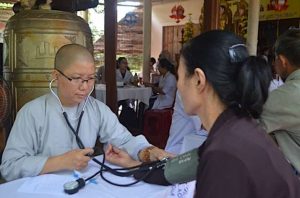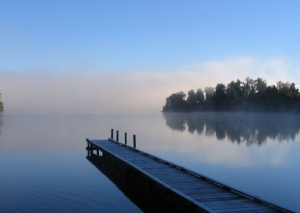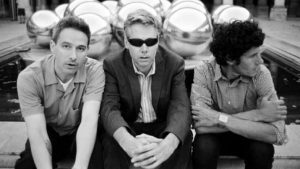A group of 12 artists is creating an installation depicting the life of the Buddha’s—his birth, enlightenment, and mahaparinirvana—on the campus of Gautam Buddha University on the occasion of MotoGP Bharat Grand Prix race.
Gautam Buddha University is coordinating delegate registrations and ticket sales for the MotoGP Bharat Grand Prix, which us scheduled to take place from 22–24 September at the Buddh International Circuit in Greater Noida, Uttar Pradesh. The event is aimed at growing the sport of competitive motorcycle racing in India.
The university, located in Gautam Buddha Nagar District, was founded on 207 hectares of land in 2002. Named after Siddhartha Gautama, who became the Buddha, the institution promotes the importance of the Buddha’s teachings by teaching Buddhist philosophy and its relevance in engendering peace, harmonious coexistence, and holistic development.
The creators of the art installation, mostly undergraduate students from the university’s Faculty of Fine Arts, expressed delight at the opportunity to display their work for an international audience during the MotoGP Bharat Grand Prix. They are creating three large works measuring 3.6 meters by 2.7 meters and representing the three key phases of Buddha’s life.

“The three major stages in Gautam Buddha’s life include his birth and early life when he was known as Prince Siddhartha, the enlightenment era, and from attaining Nirvana to this death,” said Anchal Bohra, secretary of the Handloom and Handicraft Export Association, who is coordinating with the artists and the MotoGP team. “The Mara Vijay theme of [the] Buddha will also be depicted in the exhibition, which can be originally found in the Ajanta Caves (Aurangabad).”(The Times of India)
“These paintings were originally found on the walls of 29 rock-cut Buddhist cave monuments dating from the second century BCE to about 480 CE in Aurangabad District of Maharashtra,” said lead artist Tapash Jana. “We are trying to replicate them.” (The Times of India)
Jana explained that the installations would be made of thermocol [a form of polystyrene], which is cut into blocks then joined together, supported by wooden blocks, and painted for realism.
According to Jana, the artists had just two weeks to prepare a project that would typically take four months. As such, he said, they were racing against time while simultaneously embracing the task.
“The project is challenging, but we are enjoying it,” said artist Alok, who added that it was an excellent opportunity and source of inspiration for the group of artists. (The Times of India)

The artists are supported in their work by a team of local creatives, among them Deepshani, who had registered for the undergraduate degree course in fine arts but lacked the finances to complete her studies. Deepshani said that the MotoGP project was the greatest canvas she could aspire to as she eagerly awaited the opportunity to present her art to an international audience.
According to Legislative Assembly member Dhirendra Singh, the motto of the recently concluded G20 summit in India was Vasudhaiva Kutumbakam “One Earth, One Family, One Future,” which echoed the life and teachings of the Buddha. As a result, he said, “Visitors must be familiar with our art, culture, and tradition.” (The Times of India)
See more
Grand Buddha installations to greet visitors (The Times of India)
MotoGP Bharat 2023: Here is all you need to know about schedule, tickets and more (The Indian Express)
Related news reports from BDG
Lessons in Impermanence: Ajanta Caves Under Threat
Gautam Buddha University in India: A Home for Modern Education in an Awakened City
1,000-Year-Old Buddhist Archaeological Site of Pilak Included in New Tourism Circuit for India
Indian PM Modi Meets Buddhist Scholar Robert Thurman and Other Thought Leaders during US Visit
Related features from BDG
Ajanta – A Portrait of Faith
Buddhism and India – The Child Returns Home . . . ?
Ajanta Relived: The Restorative Work of M. R. Pimpare
A Journey Through the Art of Compassion with Benoy K. Behl: The Ajanta Caves
Metropolitan Museum of Art to Showcase “Tree & Serpent: Early Buddhist Art in India, 200 BCE–400 CE”
In the Footsteps of the Buddha: Ven. Pomnyun Sunim Leads 1,250 Jungto Practitioners on a Pilgrimage to India













